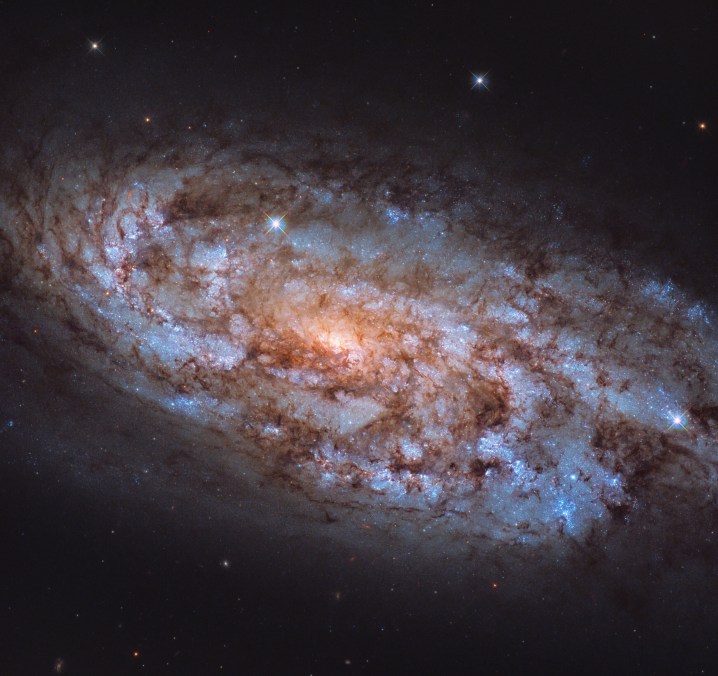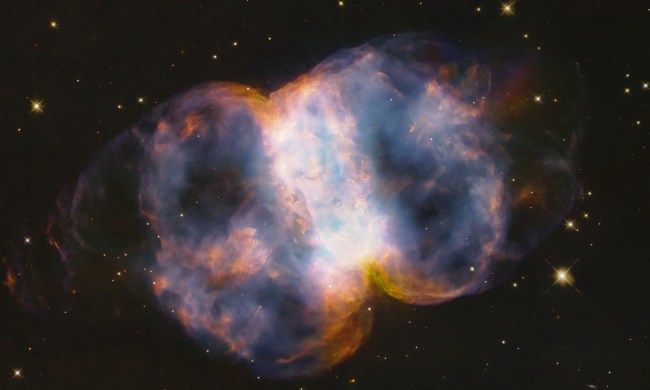
NASA has shared another beautiful image captured by the Hubble Space Telescope. This image shows the galaxy NGC 1792, located around 36 million light-years away in the constellation of Columba (The Dove).
This galaxy is interesting as it is both a spiral galaxy — like the Milky Way — and a starburst galaxy — where stars are produced at a tremendously high rate. In our galaxy, stars are produced at the rate of around three solar masses per year, but in a starburst galaxy stars are produced up to ten times faster. This fast production of stars is possible because of the large reservoir of gas in the galaxy, which forms the building blocks of new stars.
One topic being investigated by Hubble scientists is how star formation slows down before the galaxy uses up all of its gas. It is thought that supernovae and stellar winds disperse the gas and halt star formation, leaving some gas remaining.
In the image, you can see patches of dark dust that obscure the light. This light comes from all of the new stars being born which glow brightly and illuminate the hydrogen gas with their infrared radiation.
This same galaxy was imaged by two ground-based instruments of the European Southern Observatory’s Very Large Telescope in 2003. You can see the difference in how much detail can be collected by a space-based instrument that does not have to peer through Earth’s atmosphere, and also differences in how images are colorized to bring out particular features:




